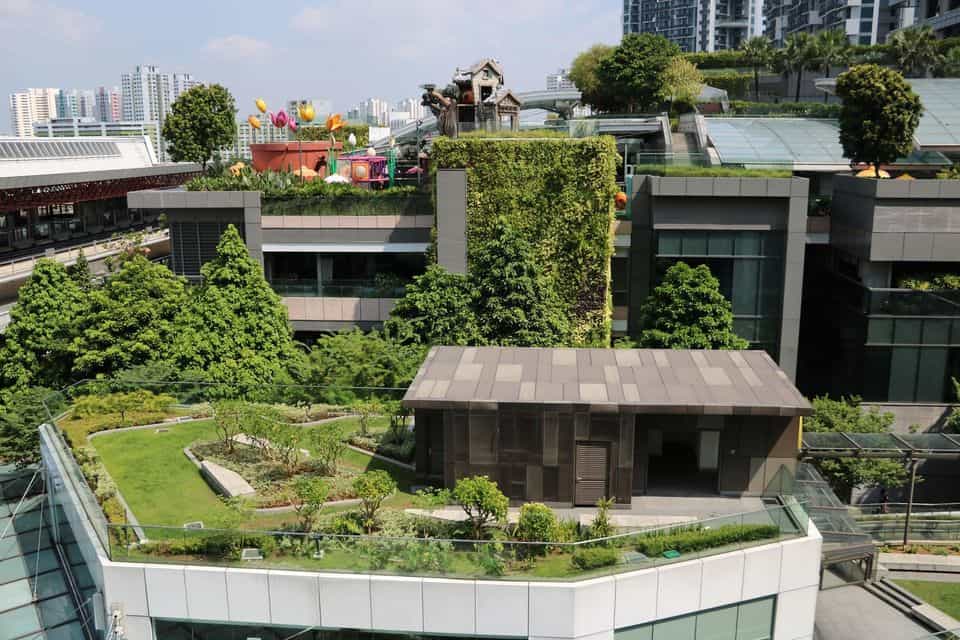Buildings are responsible for 39% of the world’s energy-related
carbon emissions – we can’t tackle the climate crisis without urgent action to
make them more sustainable.
But a truly effective response demands that we think bigger that
individual buildings. Which is why the two 2020 Ashden Awards in this area –
one for UK-based work, and one covering the rest of the world – recognise
innovation in the wider built environment. Our judges are looking for examples
of amazing work in public spaces and infrastructure as well as homes, offices
and factories.
It’s vital we stop thinking of our buildings as isolated
units and see them as parts of a broader system. Only then will we truly
understand their carbon impact, and the action we need to take. This isn’t just
about fully accounting for today’s emissions – putting buildings in context
also helps reveal the effective solutions that are so badly needed.
So how can we change the way we think about our built
environment – this complex system serving so many different needs? By taking a
fresh look at its past, present and future.
The past: retrofits and embodied carbon
High standards for new construction are important – but
emissions from old buildings are a huge, and often neglected, problem. In the
UK about 80% of the homes we will be occupying in 2050 already
exist.
We need to find effective ways of retrofitting older
buildings, making them more comfortable and energy-efficient. In particular, we
want to hear about high-impact retrofits that create big carbon savings across more
than one building.

We must also pay more attention to the emissions created by
a building before its first tenants have moved in. These account for 11% of global
energy-related carbon emissions – through the making and moving of construction
materials, as well as building site activity.
We want to award solutions that will make a net carbon
reduction before 2030, which means their annual carbon saving must be at least
10% of the carbon expended during their implementation. If there’s an enormous
carbon cost to creating an efficient building (or making an old one efficient),
the annual carbon savings could be a false economy. Solutions might include
minimising use of high-carbon concrete and steel in favour of natural materials
– or drawing on local materials as much as possible.
The present: sustainable living, warmer buildings
This year’s awards will ask how buildings can help people
live more sustainably. For example, we’d love to see great examples of
buildings and areas that help people adopt or make more use of low-carbon
travel. This could be through improved walking and cycling routes, space for
cycle storage, public transport access and electric vehicle charging.
Of course, better insulation and efficient systems inside buildings
are still crucial. Heating in particular is a huge challenge. Heating
and hot water for UK buildings make up 40% of the country’s energy
consumption and 20% of its greenhouse gas emissions.
Again, thinking about the bigger picture – how buildings
interact with the wider world – leads us to promising innovation. This might
include heat networks running off excess heat from industrial processes, or
biogas from waste digestion. Heat pumps sourcing heat from the ground, air or
water also have huge potential to decarbonise heating.
The future: a growing need for resilience
In the UK and around the world, climate change is already
driving more extreme weather. Recent events such as South Asia’s deadly
heatwaves and damaging floods in large parts of England will become even more
common as temperatures rise in the years ahead. Our built environment must be
ready to cope with the problems this brings.

Natural solutions could play a key role in building
resilience – as protection against flooding, for example, or a source of
low-carbon food for people living nearby. We are keen to see projects
incorporating green walls and roofs, natural landscaping, rainwater management –
all of which help deliver reduced emissions and a better environment year-round,
as well as helping during moments of climate crisis. We want to see solutions
that include passive design, helping to keep buildings at a comfortable
temperature with minimal energy use.
A fair transition
With such a huge challenge ahead, we’re going to need
innovation in the all these areas and many, many more. Our judges are keen to
hear about any efforts to deliver better lives and radically lowered emissions
through changes to the built environment.
They will also consider the need for a fair transition:
solutions must have the potential to benefit everyone, particularly the most
vulnerable – who are most at risk from the effects of climate change. The very
best innovation in this area has the potential to address the failures of the
past, enable better living today and create a brighter future.

